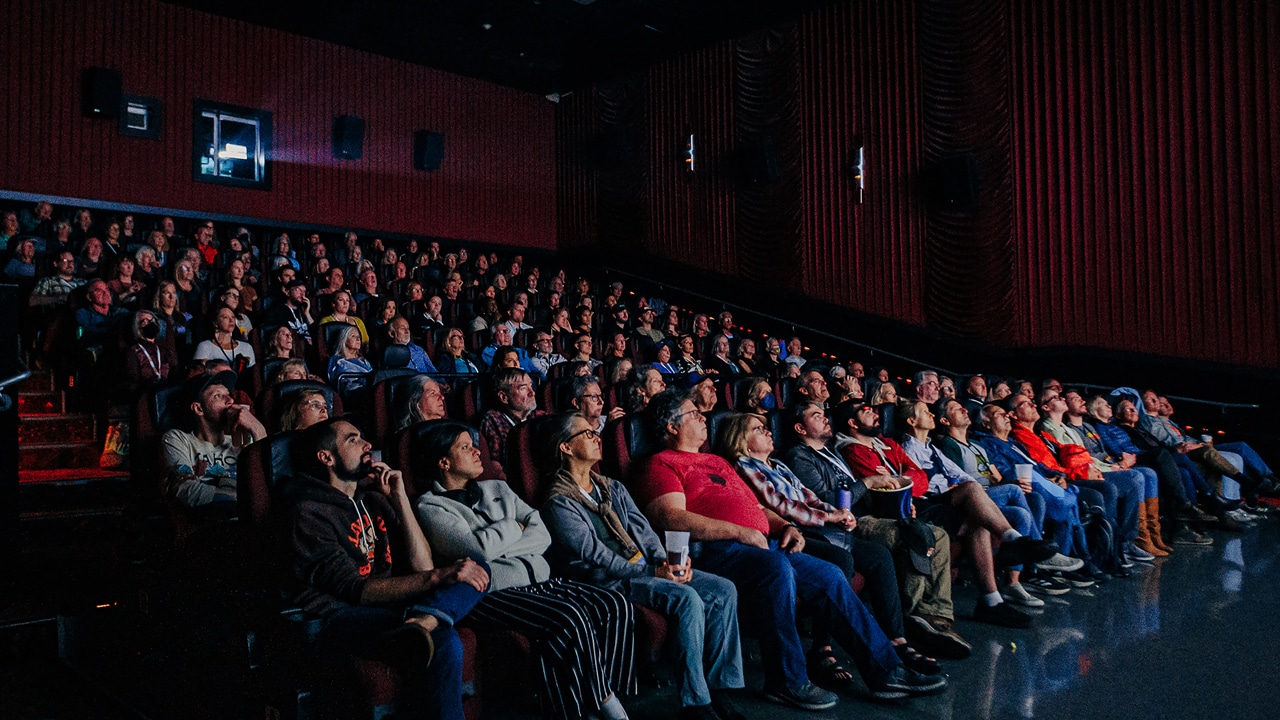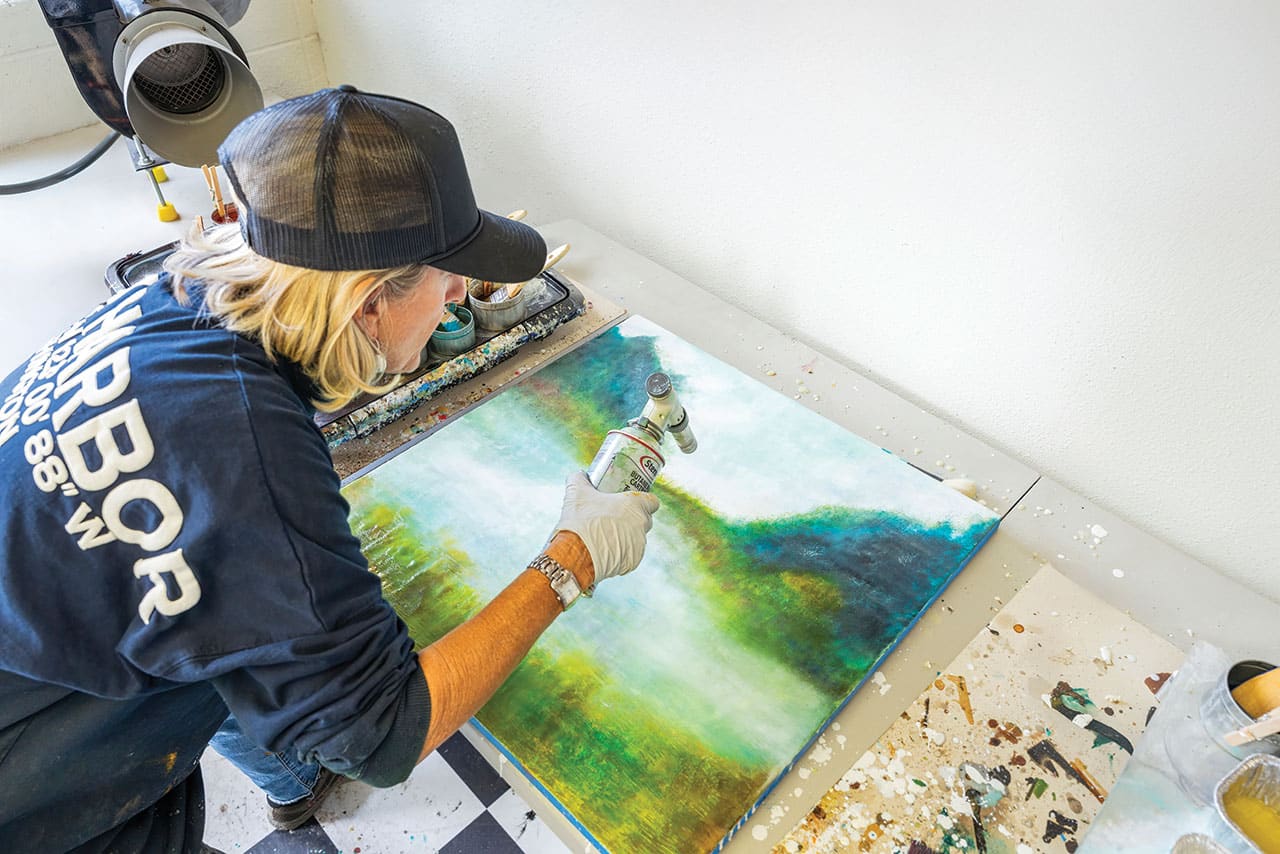A 260-acre ranch beside Whychus Creek, surrounded by the peaks of the Three Sisters Wilderness and the Deschutes National Forest in Sisters, is inspiring artists of all disciplines from around the country. In rustic studios, including a converted dairy barn, tack room and shop, artists immerse themselves in pursuits from metalwork and painting to fiber arts, photography, writing, music and more.
At Pine Meadow Ranch Center for Arts & Agriculture, during two- and four-week residencies, artists share the ranch’s large, historic home, engage with local and regional experts related to their fields and offer events for the public. The center aims to bridge sustainable agriculture, conservation, the arts and sciences.
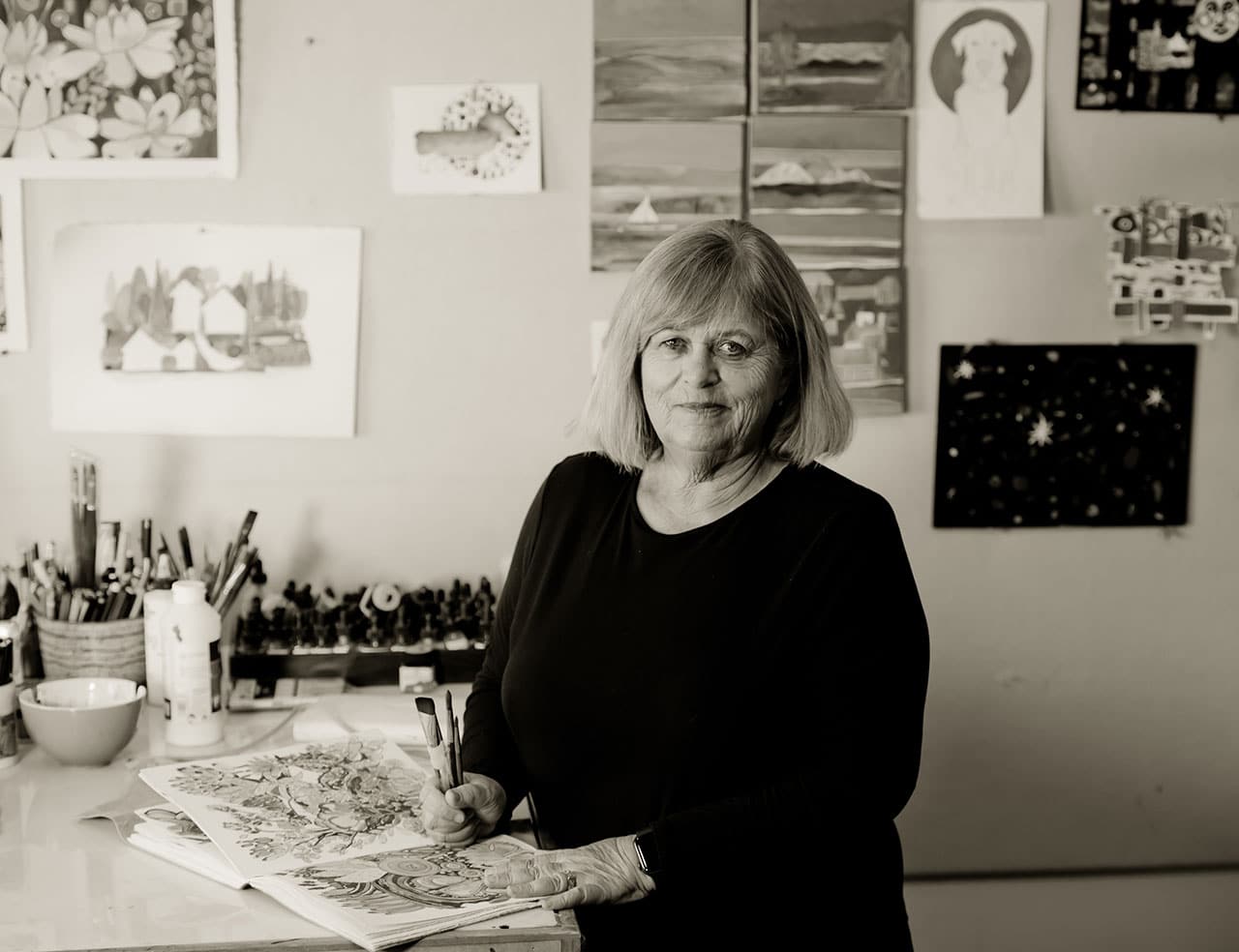
This year’s residency theme, “Care and Stewardship,” links the program with the work of its umbrella organization, the Roundhouse Foundation, which focuses on supporting rural and Indigenous spaces.
Connecting Artists and Community in Creative Collaboration
The value of an artist residency in the creation of a work was evident this past spring, when the 2025 Pulitzer Prize for a memoir was awarded to one of the ranch’s first participants. Tessa Hulls of Seattle worked on her debut book, the graphic novel Feeding Ghosts, during her residency at the ranch in 2018. She mentioned that she was inspired by the Ranch and did much of her writing there, in the book’s acknowledgements.
It’s an example of the vision of Roundhouse Foundation Founder and Trustee Kathy Deggendorfer, an accomplished painter who believes that bringing together artists and scientists of seemingly disparate disciplines yields inspiring discussion and the basis for creative problem solving. She researched and attended multiple residencies around the nation and abroad to inform the program at the ranch.
“There were always interesting conversations, new ways of thinking about things, expanding people’s horizons,” she said. “It’s this great equalizer and a way to create this area of respect between people, which I think is something that’s really, really needed now.”
Two recent artist residents, Mallory Craig and Joshua Anderson, hail from New York City and North Dakota respectively, and at the ranch both deepened their artistic journeys and worked on projects they shared with the local community.
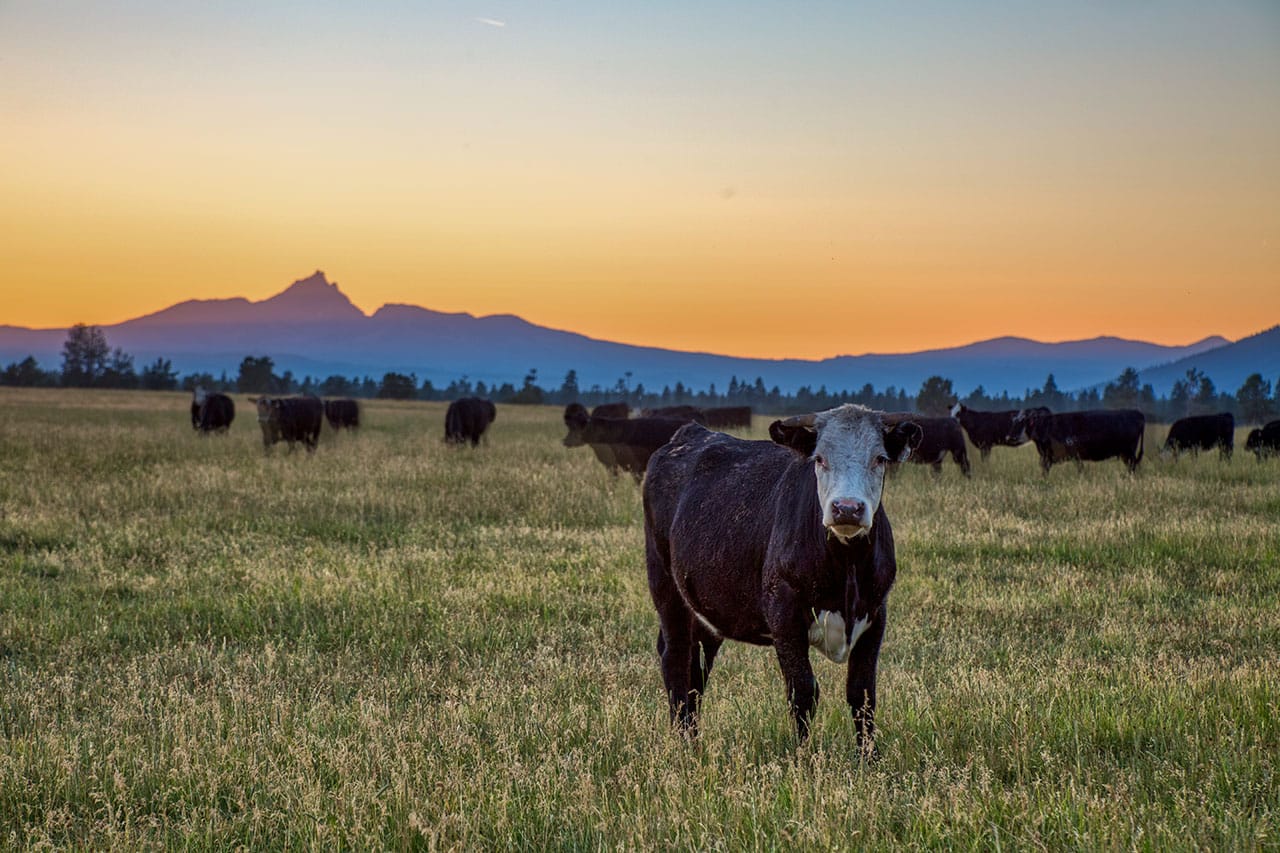
Connecting with the Land
For Mallory Craig, a residency gave her insight into rural food systems, which connects to her work with the urban food system in her home neighborhood of Harlem. There, Craig manages the Greenhouse and Education Center and Learning Gardens, where she offers community programs around therapeutic horticulture, art
and foodways.
At the ranch, Craig shadowed staff, learning about regenerative practices such as rotational grazing and the use of native plants to support water conservation and fire ecology. As part of her ongoing project around eating as an agricultural act, she made plant pigments and handmade papers for image transfers. She often found herself in the sagebrush at the ranch, surrounded by ponderosa pines.
“We play a part in our local ecologies and our food system just by what we decide to eat,” she said. “To look up and know that the water that I was hearing was coming from these amazing mountains—you can see how it all connects and how the ecology really relies on itself,” said Craig.
She led a workshop on developing a more intimate relationship with food and nature. The workshop included two activities: starting a sit-spot practice, where guests found a quiet place to observe nature, and creating an artful recipe book by considering their everyday foods.
Words and Filmmaking as Seeds of Change
An integral part of our food system and health is soil, the focus of another artist resident, writer Joshua Anderson. He had been teaching literature and creative writing in New England in 2022 when he made a fateful visit to his hometown in rural North Dakota. “There was a biblical windstorm, acres and acres and acres of topsoil were blowing away, it looked like [a scene from] The Grapes of Wrath.”
Poor soil health practices, including the area’s monoculture of sugar beets for processed sugar, led to erosion. His home county has lost more than half of its topsoil since 1960. “People think the Dust Bowl ended in the 1930s, but it has decidedly not ended in the rural Great Plains,” Anderson said.
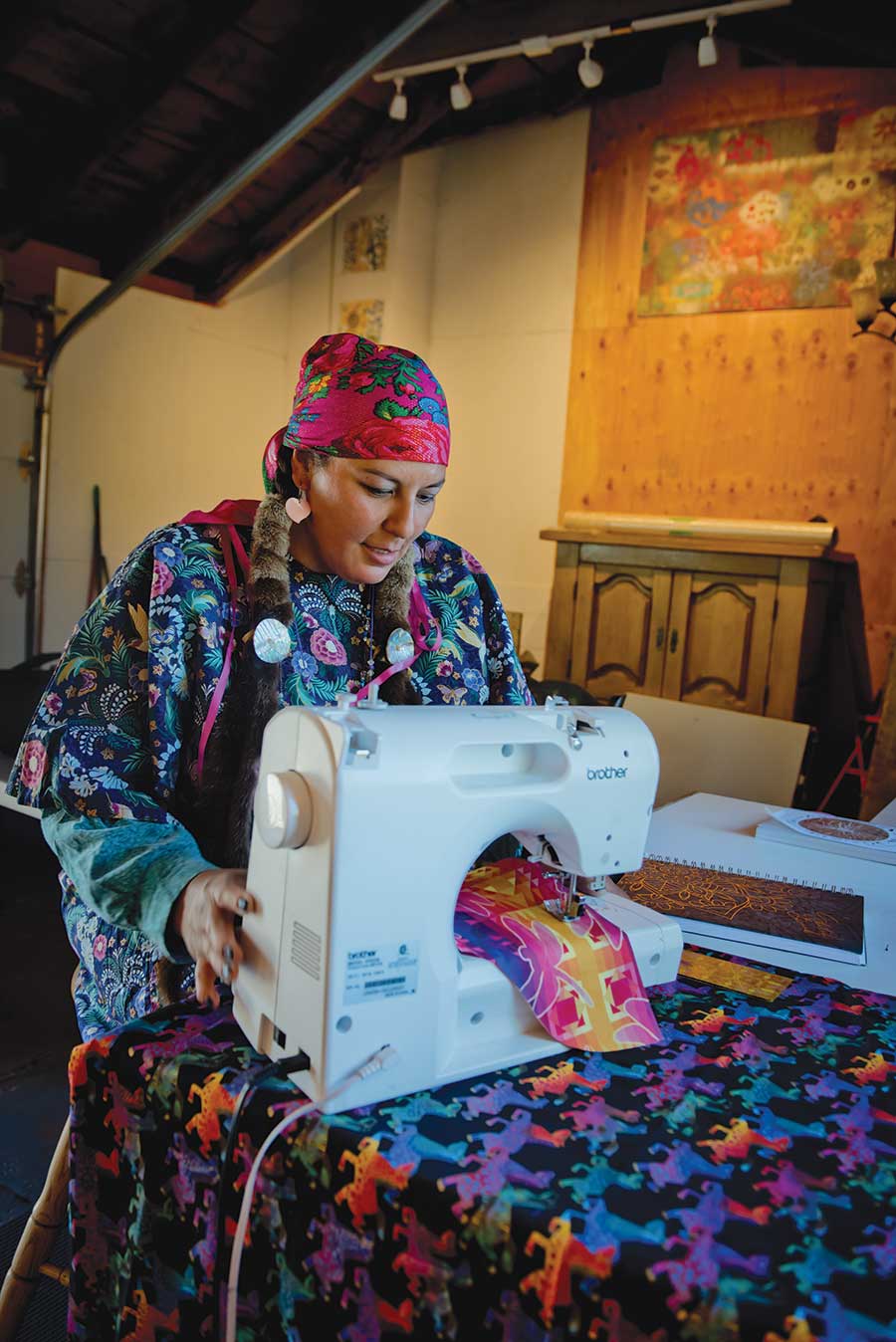
A job with his hometown’s soil conservation district opened, and he took it. As manager and watershed coordinator, his work ranges from running public education and outreach programs to planting grass and trees, and collecting water samples.
Pine Meadow Ranch connected him with Central Oregon soil scientists, geologists, river ecologists and others to help advance his conservation and storytelling work, which includes “Common Ground: A Prairie Podcast” and a documentary film tentatively titled “Soil and Water.”
During his residency, he also collaborated on a lecture with his sister, Jordana Anderson, a geologist and biologist in Prineville, exploring land health, personal care work and rural abundance. Guests engaged in discussion, followed by a seed planting activity.
Conservation work is much like seed planting, he said. “A lot of the seeds that you plant, nothing grows, and so you’ve got to plant a lot of them.”
On July 16, 2025, attend the Open Studio of the 2025 residency season at Pine Meadow Ranch Center for Arts & Agriculture | Click for upcoming artist-in-residence workshops, lectures and open studios



